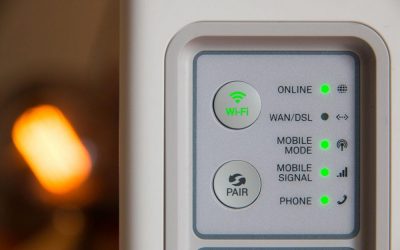Test your current internet speed
Before you get started, test your current internet speed. Use your speed test result as a baseline and compare the results as you go through your journey on reaching a faster internet connection.
SpeedtestEthernet is a widely used networking technology that provides reliable and high-speed connections for both home and business networks.
This article explores the basics of Ethernet, including its origins, components, setup, and standards.
Discover the advantages of Ethernet in different network environments and learn how to troubleshoot common issues. Whether you’re seeking to optimize your network performance or understand the differences between Ethernet and Wi-Fi, this comprehensive guide offers valuable insights.
Read on to enhance your knowledge of Ethernet and its role in modern networking.
The Origins of Ethernet
Ethernet was developed in the 1970s by Xerox Corporation’s Palo Alto Research Center (PARC) and later popularized by Digital Equipment Corporation (DEC) and Intel. It was initially designed as a local area networking (LAN) technology to connect computers and other devices within a limited geographical area.
Ethernet Components and Terminology
To understand Ethernet fully, it’s important to familiarize ourselves with its key components and associated terminology.
1. Ethernet Cables
Ethernet cables are the physical medium used to transmit data in Ethernet networks. The most commonly used type of Ethernet cable is the twisted-pair copper cable, known as Category 5e (Cat 5e) or Category 6 (Cat 6) cable. These cables have four pairs of twisted wires and use RJ-45 connectors.
2. Network Interface Cards (NICs)
Network Interface Cards, also referred to as Ethernet adapters, are hardware components that enable devices to connect to an Ethernet network. They are installed in computers, servers, and other devices to facilitate network communication.
3. Ethernet Switches
Ethernet switches are central devices that enable multiple devices to connect and communicate within an Ethernet network. They receive data packets from one device and forward them to the appropriate destination device, allowing efficient data transmission.
4. Routers and Modems
Routers and modems are devices that facilitate network connectivity between different networks, such as connecting a local network to the Internet. Routers determine the best path for data packets to reach their destination, while modems enable the conversion of digital signals to analog signals for transmission over telephone lines.
Ethernet Standards and Speeds
Ethernet has evolved over the years, with various standards and speeds defining its capabilities.
Ethernet Categories
Ethernet cables are categorized based on their performance and capabilities. Common categories include Cat 5e, Cat 6, and Cat 6a. Higher categories generally offer better performance and support higher data transmission speeds.
Speed Variations
Ethernet speeds have significantly increased over time. The most commonly used Ethernet speeds today include 10 Mbps (Megabits per second), 100 Mbps, 1 Gbps (Gigabit per second), and 10 Gbps. The industry continues to push for even higher speeds to accommodate growing data demands.
Ethernet Setup and Configuration
Setting up Ethernet connections involves connecting devices and configuring network settings.
1. Connecting Devices with Ethernet
To establish an Ethernet connection, connect one end of an Ethernet cable to the Ethernet port on your device (e.g., computer, gaming console, or smart TV) and the other end to a switch, router, or modem.
2. IP Addressing and DHCP
Ethernet networks rely on IP addressing to identify and communicate with devices. Dynamic Host Configuration Protocol (DHCP) automatically assigns IP addresses to devices connected to the network, simplifying the configuration process.
Ethernet in Home Networks
Ethernet offers several benefits when setting up a home network.
1. Benefits of Ethernet in Home Networks
Ethernet provides faster and more reliable data transfer compared to wireless connections. It is ideal for activities that require high bandwidth, such as online gaming, streaming, and file transfers.
2. Setting Up Ethernet in Your Home
To set up Ethernet in your home, run Ethernet cables from your router or switch to the desired locations where you want to connect devices. Ensure that the cables are properly connected and configure the network settings accordingly.
Ethernet in Business Networks
Ethernet is widely deployed in business networks due to its advantages in terms of scalability, reliability, and performance.
1. Advantages of Ethernet in Business Networks
Ethernet allows businesses to establish secure and efficient local area networks (LANs) and wide area networks (WANs). It enables seamless communication between devices, supports high-speed data transfer, and facilitates the integration of various network services.
2. Ethernet in Local Area Networks (LANs)
Ethernet forms the backbone of LANs in businesses, connecting computers, printers, servers, and other devices within a single location. It enables efficient data sharing and collaboration among employees.
3. Ethernet in Wide Area Networks (WANs)
Ethernet is also used in WANs, connecting geographically dispersed locations and facilitating data transfer between them. It enables organizations to establish reliable and secure connections across multiple sites.
Ethernet vs. Wi-Fi: Pros and Cons
Ethernet and Wi-Fi are two commonly used networking options, each with its own advantages and disadvantages.
1. Ethernet Advantages
Ethernet offers higher speeds, lower latency, and greater reliability compared to Wi-Fi. It is more suitable for stationary devices that require a consistent and robust network connection.
2. Wi-Fi Advantages
Wi-Fi provides the convenience of wireless connectivity, allowing devices to connect without physical cables. It is ideal for portable devices and situations where mobility is a priority.
3. Choosing Between Ethernet and Wi-Fi
The choice between Ethernet and Wi-Fi depends on specific requirements, such as device location, desired speeds, and the need for a stable connection. It’s common to use a combination of both technologies in a network setup.
Troubleshooting Ethernet Connections
Despite its reliability, Ethernet connections may encounter issues that require troubleshooting.
Common Ethernet Issues
Common Ethernet issues include cable faults, incorrect network configurations, IP address conflicts, and software misconfigurations. These can result in connectivity problems and slow data transfer speeds.
Troubleshooting Tips
To troubleshoot Ethernet connections, ensure that cables are securely connected, check network settings for accuracy, and restart devices if necessary. Updating drivers and firmware can also resolve compatibility issues.
Conclusion
Ethernet has revolutionized networking by providing a reliable and efficient means of communication for both home and business networks.
Its components, standards, and setup procedures offer a solid foundation for building robust networks.
By understanding the basics of Ethernet, you can make informed decisions regarding network connectivity options and optimize your network for enhanced performance and reliability.
Frequently Asked Questions
- Q: Can I use Wi-Fi and Ethernet together?
A: Yes, you can use both Wi-Fi and Ethernet simultaneously in your network setup. - Q: How do I know if my device has an Ethernet port?
A: Most computers, laptops, gaming consoles, and smart TVs have Ethernet ports. They are typically labeled as “Ethernet,” “LAN,” or “Network.” - Q: What is the maximum distance Ethernet cables can reach?
A: The maximum distance for Ethernet cables depends on the category and quality of the cable. In general, Cat 5e and Cat 6 cables can reach up to 100 meters (328 feet). - Q: Can I connect my mobile devices to Ethernet?
A: Yes, some mobile devices support Ethernet connectivity with the help of adapters or docking stations. - Q: Is Ethernet more secure than Wi-Fi?
A: Ethernet connections are generally considered more secure than Wi-Fi due to the physical nature of the connection and the absence of wireless signals that can be intercepted.
By understanding the fundamentals of Ethernet, you can make informed decisions about implementing and optimizing this widely used networking technology in your home or business.
Ethernet provides a stable and high-speed network connection, enabling seamless communication and data transfer.
Whether you’re streaming movies, playing online games, or running a business network, Ethernet serves as a reliable backbone for your digital connectivity needs.

The visionary founder behind SpeedtestGo, an innovative platform dedicated to helping users measure and optimize their internet speed. With a deep-rooted love for technology and a mission to empower individuals with reliable internet connections, Shawn has created a remarkable space where users can test their internet speed and gain valuable insights and information through engaging blog content.





![Connected to Internet But Nothing Loads [FIXED]](https://speedtestgo.com/wp-content/uploads/2023/06/depressed-frustrated-woman-working-with-computer-laptop-desperate-work-isolated-white-wall-depression-400x250.jpg)


